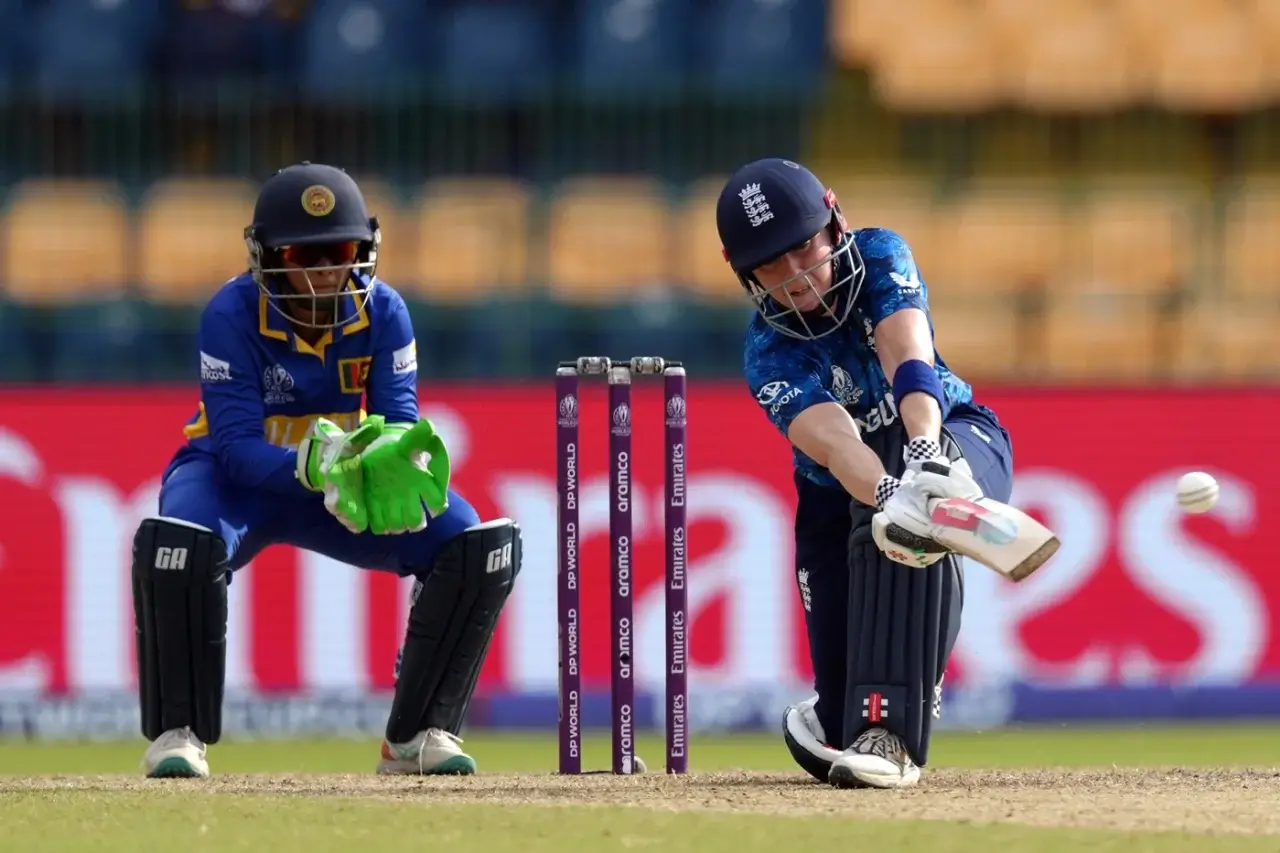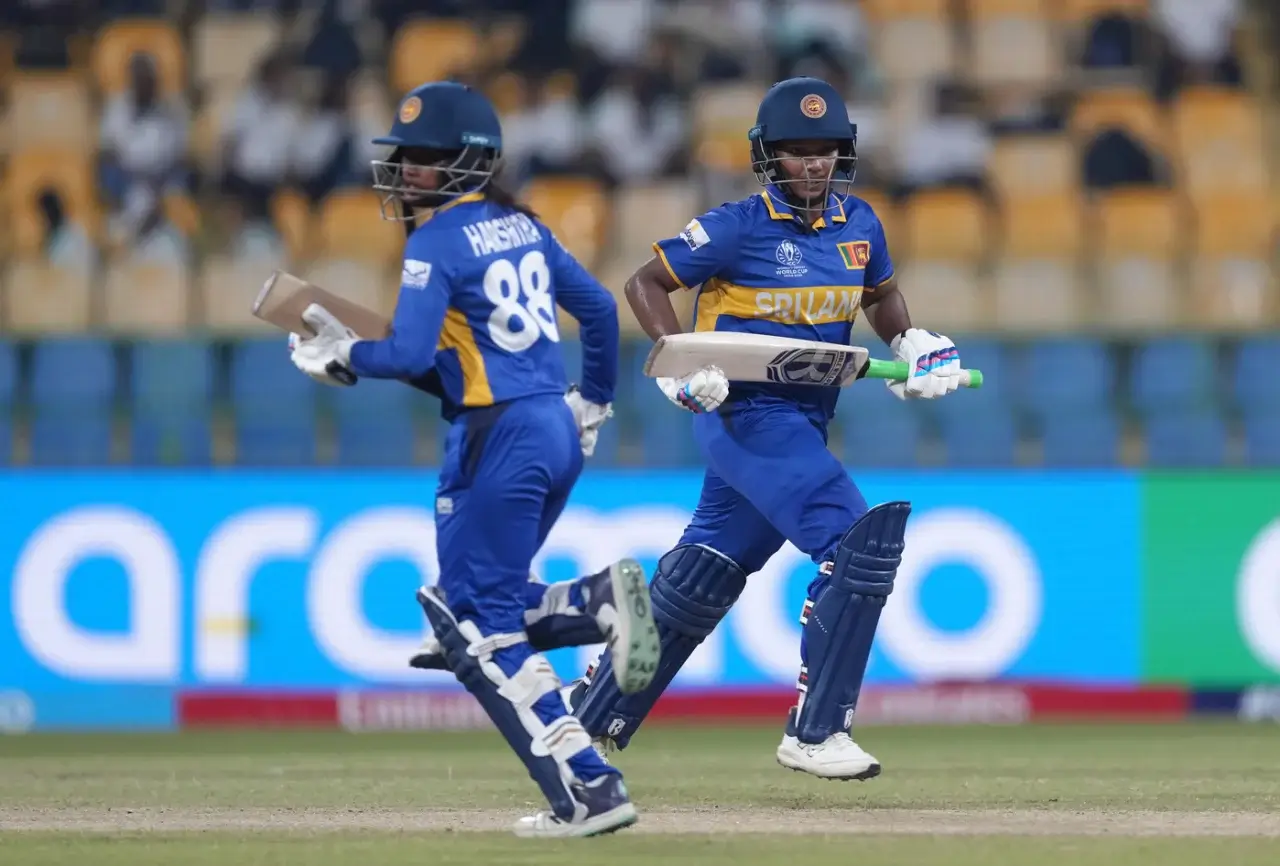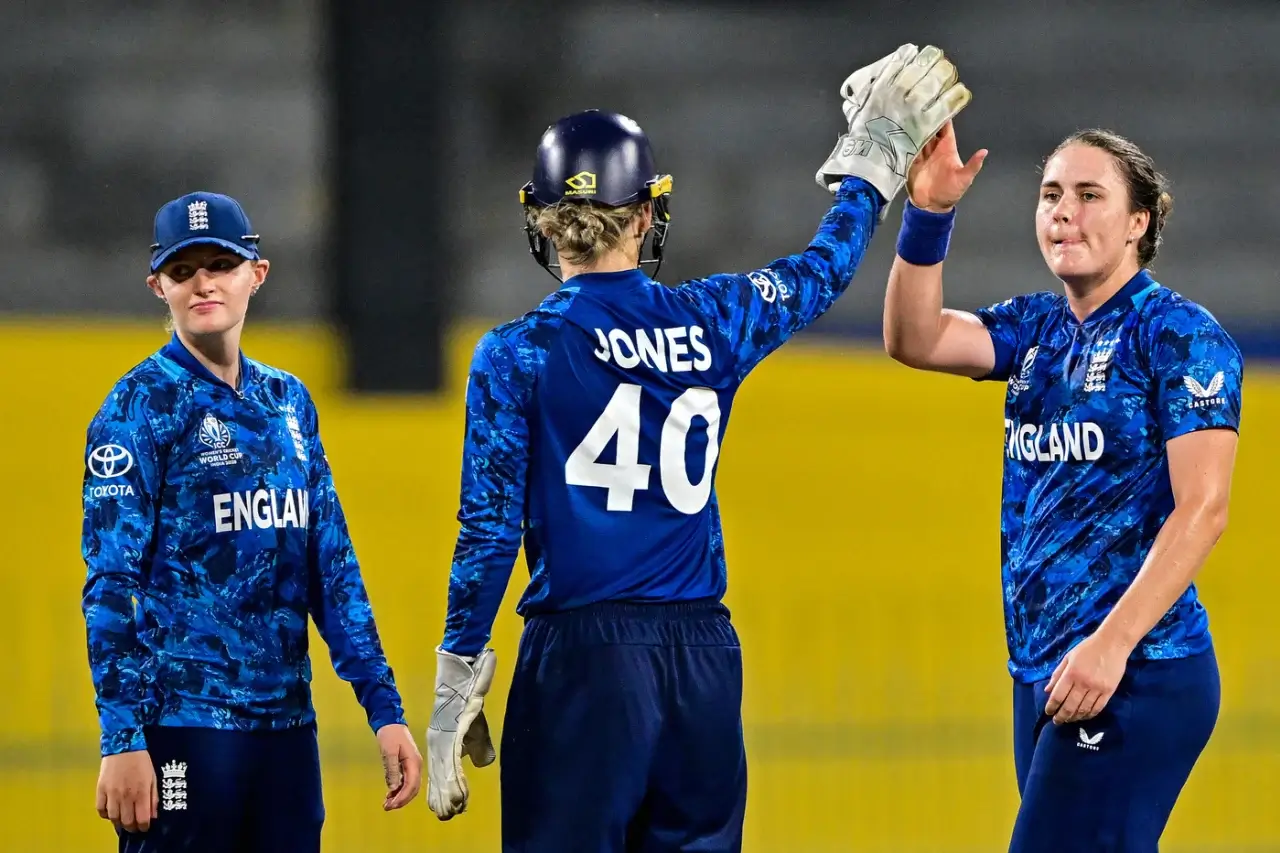England continued their perfect run in the Women’s ODI World Cup 2025 with another polished performance in Colombo. Nat Sciver-Brunt delivered a classy hundred to lead England to 253 for 9 before Sophie Ecclestone’s four-wicket spell demolished Sri Lanka’s chase. The 89-run win took England to the top of the table with three wins from three.
Sri Lanka fought bravely despite losing Chamari Athapaththu early to cramps. Her return later lifted spirits but England’s discipline proved too strong. Ecclestone’s spin and Sciver-Brunt’s control on a slow pitch turned the game decisively. England’s fielding and planning were near flawless, while Sri Lanka’s misfields and dropped chances hurt badly.
This match summed up the gap between experience and execution. Sciver-Brunt’s hundred was a lesson in patience and power, while Ecclestone reminded everyone why she is the world’s No. 1 ODI bowler. As Sri Lanka seeks balance and composure, England marches confidently toward the semifinals, like India did after beating Bangladesh.
Sciver-Brunt’s innings: composure, timing, and control under pressure
Nat Sciver-Brunt has made difficult surfaces look simple throughout her career, and this was another masterclass. She walked in after early wickets and anchored the innings with grace and precision. Her ability to judge length early allowed her to rotate strike smoothly while punishing poor deliveries.
The partnership with Heather Knight steadied England during a tricky phase. Their 60-run stand blended calm shot selection and targeted aggression, spreading the field and forcing Sri Lanka’s bowlers off rhythm. Sciver-Brunt’s knock was built on discipline — 73 singles, calculated boundaries, and precise placements through gaps.
Her century came at a crucial stage, as England had stumbled from 141 for 3 to 168 for 6. She lifted the scoring in the final overs with back-to-back sixes, both showcasing balance and clean striking. That late acceleration took England beyond 250, a total that proved unreachable for Sri Lanka.
Sciver-Brunt’s innings wasn’t just valuable for its runs. It was a display of situational intelligence — knowing when to absorb pressure and when to strike. She turned what could have been a collapse into a commanding position.
Key partnership with Knight defines England’s stability
Sciver-Brunt’s chemistry with Heather Knight again proved vital. Knight guided strike rotation, while Sciver-Brunt handled risk shots. Together, they built a middle-overs rhythm that frustrated Sri Lanka. Their stand transformed the momentum before the late collapse.
Even when Knight fell to a reverse sweep reviewed with seconds to spare, Sciver-Brunt continued to pace the innings perfectly. That adaptability defines England’s new batting identity — measured, intelligent, and efficient.
Ecclestone’s bowling spell: accuracy meets ruthlessness
Sophia Ecclestone is now firmly in her prime as a match-winning spinner. Bowling ten consecutive overs, she produced three maidens and claimed four wickets for just 17 runs. The precision of her lines, flight variations, and rhythm left Sri Lanka helpless.
Her spell began quietly but exploded into dominance once Hasini Perera mistimed a drive to mid-on. She followed it with sharp turners that dismissed Harshitha Samarawickrama and Kavisha Dilhari. Her final act — deceiving Athapaththu with a vicious dipper that crashed into the stumps — silenced the crowd.
What stood out was her tactical awareness. She adjusted length immediately after every misread shot, never letting batters settle. Her economy kept pressure constant, creating chances for wickets from both ends. The sight of Sri Lanka going from 89 for 1 to 164 all out summed up her impact.
Ecclestone’s control wasn’t just about spin; it was about mindset. She bowled with confidence, attacking every delivery, knowing her captain trusted her to finish the job.
Ecclestone’s consistency keeps England balanced
England’s success often mirrors Ecclestone’s rhythm. Her ability to deliver in every condition gives the team tactical flexibility. Whether defending low scores or bowling first, her spell shapes outcomes. Against Sri Lanka, her relentless line and composure reaffirmed her as England’s most vital bowler.
Sri Lanka’s performance: courage undone by key moments
Sri Lanka’s effort deserved credit but lacked finishing. Losing Chamari Athapaththu early shook the team. She was stretchered off due to cramps but later returned to bat at No. 5. Her brief resistance showed her grit but couldn’t offset England’s control.
The partnership between Hasini Perera and Harshitha Samarawickrama gave Sri Lanka hope. Their 58-run stand featured clean drives and good rotation, pushing England briefly under pressure. However, once Ecclestone broke through, wickets fell in clusters.
Sri Lanka’s fielding and fitness remain big concerns. A dropped catch early in England’s innings cost over a hundred runs. The side also looked fatigued in humid conditions, allowing several easy singles and misfields. Their bowlers fought admirably, with Inoka Ranaweera taking 3 for 33, but lacked support from others.
Coach Rumesh Ratnayake emphasized patience and discipline post-match. He said Sri Lanka must learn to bat deeper and preserve wickets longer. If they can tighten fielding and build partnerships, they can still turn things around.
Chamari Athapaththu’s return after collapsing was a sign of resilience. Despite visible fatigue, she chose to bat again for her side. Her eight-run cameo might not change the scoreboard but symbolized her commitment. Her presence lifted spirits in the dugout and reminded fans why she remains the team’s heartbeat.
England’s tactical clarity and mental strength stand out
England’s game management has been their biggest asset this World Cup. They prepare well, rotate bowlers smartly, and adapt quickly. The decision to give Ecclestone a full spell early showed confidence in conditions. It worked perfectly as Sri Lanka’s batters never recovered from her pressure.
The team’s batting also reflected tactical maturity. Tammy Beaumont set the tone early, while Sciver-Brunt managed middle overs. When wickets fell, lower-order batters focused on rotating strike instead of slogging. This awareness allowed England to avoid collapses that have hurt other teams.
Their fielding has been sharp throughout the tournament. Amy Jones kept brilliantly, pulling off sharp stumpings and assisting in two run-outs. England’s overall communication and teamwork stood out as they adapted instantly after every over.
The combination of leadership, balance, and composure makes England a serious title contender.
Heather Knight’s tactical calls continue to stand out. She knows when to introduce bowlers and how to handle transitions. Backing Ecclestone for ten consecutive overs showed complete faith. Knight’s calmness and timing under pressure remain crucial in England’s success.
How does England’s depth and structure make them title favourites?
England’s dominance in this tournament comes from balance. Every player knows their role and executes it with precision. Sciver-Brunt, Ecclestone, Knight, and Beaumont provide the experienced spine. Around them, younger players like Alice Capsey and Charlie Dean bring fresh energy and adaptability.
The bowling attack offers everything — pace with Lauren Bell, control with Ecclestone, and variation through Dean. Their batting depth means even at 160 for 6, they can still reach 250. This strength across departments sets them apart.
England’s focus on data-driven strategy has also helped them read pitches perfectly. Their coaches analyze each ground’s scoring pattern to plan matchups. Against Sri Lanka, they attacked spinners early, then let Sciver-Brunt rebuild calmly.
This structured but flexible approach makes them a complete team. If they sustain this form, it’s hard to see anyone stopping them.
What’s impressive is England’s ability to adjust from one venue to another. Whether batting first or chasing, they stay disciplined. Their batting depth, combined with bowling accuracy, shows a team ready for knockout stages.
Conclusion
England’s 89-run win over Sri Lanka was more than just another group victory. It showed the strength of a side that knows its game inside out. Sciver-Brunt’s century gave direction, Ecclestone’s spell sealed dominance, and Knight’s leadership held everything together.
Sri Lanka can take heart from their spirit and phases of fight. But to compete with elite sides, they need consistency, sharper fielding, and top-order stability. Athapaththu’s courage and Ranaweera’s bowling offered positives to build on.
England, meanwhile, look every bit the tournament’s team to beat. Their combination of form, depth, and tactical excellence makes them dangerous. As the World Cup moves forward, this balance of experience and youth could drive them toward another title challenge.








